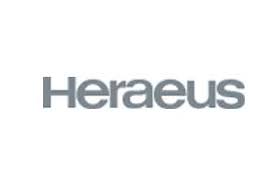
Heraeus Comvance
Products and Solutions
Heraeus offers a variety of products and solutions for passive components of the telecommunications industry. Our product portfolio includes large RIC cylinders as cladding for telecom fibers, high purity fused silica tubes for core rod manufacturing as well as preform manufacturing services. Apart from that we are developing products for next-generation optical fibers
RIC® - The advanced preform technology
RIC® Cylinders
The RIC cylinders make up the largest part of the cladding of single mode fibers produced via the RIC process. Over the years the size of the cylinders has grown and will grow to improve the cost of fiber production.
Compared to the direct OVD deposition on a core rod, using the RIC process allows for the core rods to have a lower initial cladding. While direct deposition is a wet process, the RIC process is a dry process. The core rod’s cladding layer is preventing defects to affect the light guiding core. For the OVD process, this protective inner cladding needs to be sufficiently thick to prevent the diffusion of Hydrogen into the core, which would result in unwanted attenuation. As the RIC process is using electric furnaces to collapse the cylinder onto the core there is a very limited risk of Hydrogen contamination and the core rod’s undoped portion can be thinner.
As the core rods usually are stretched from a mother core rod, the fiber equivalent per deposition machine can be increased, if the core takes up a larger portion of the mother preform.
Heraeus Comvance markasına ait tüm ürünler
0 kayıt bulundu